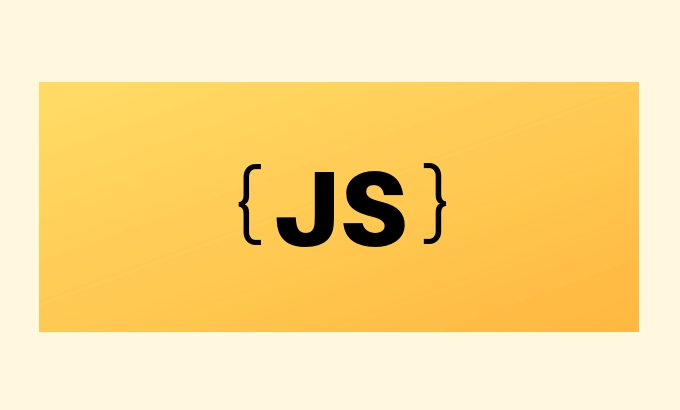 Web Front-end
Web Front-end
 JS Tutorial
JS Tutorial
 Advanced Error Handling Strategies in JavaScript for Resilient Applications, akin to Java Exception Handling
Advanced Error Handling Strategies in JavaScript for Resilient Applications, akin to Java Exception Handling
Advanced Error Handling Strategies in JavaScript for Resilient Applications, akin to Java Exception Handling
Jul 16, 2025 am 01:26 AMJavaScript can build resilient and robust applications, although its error handling model is different from Java. The article proposes five key strategies to systematically handle errors in JavaScript: 1. Always use try/catch in asynchronous functions to catch expected and unexpected errors; 2. Centrally abstract error processing logic through middleware or higher-order functions to reduce duplicate code and keep core logic clear; 3. Define custom error classes such as ApiError to distinguish different failure scenarios and achieve more precise recovery logic; 4. Record enough context information for debugging but avoid leaking sensitive data, and recommend the use of a structured log library; 5. Emphasize key points including encapsulating asynchronous calls, reusing error processing logic, creating meaningful error types, and intelligent logging to improve code maintainability and reliability.

JavaScript isn't Java, and its error handling model is simpler by design. But that doesn't mean you can't build resilient applications with it. In fact, modern JavaScript (especially with async/await and promises) gives you enough tools to implement robust error handling strategies — not exactly like Java's checked exceptions, but effective for real-world apps.

Here are a few practical ways to handle errors in JavaScript more systematically, especially when building complex or large-scale applications.
Use try/catch Consistently in Async Functions
Async functions throw errors just like synchronous ones, but because they return promises, unhandled rejections can slip through the cracks. That's why wrapping your async logic in try/catch blocks is essential.

async function fetchData() {
try {
const response = await fetch('https://api.example.com/data');
if (!response.ok) throw new Error('Network response was not ok');
return await response.json();
} catch (error) {
console.error('Fetch failed:', error);
// Optionally rethrow or handle gracefully
throw error;
}
} This pattern ensures that all expected and unexpected issues during async operations are caught early. Don't rely on .catch() at the end of every promise chain — centralizing error handling via try/catch makes debugging easier and avoids silent failures.
Centralize Error Handling in Middleware or Higher-Order Functions
If you're working with frameworks like Express.js or React, consider abstracting error handling into middleware or utility wrappers. This reduces repetition and keeps your core logic clean.

For example, in Express:
function asyncWrapper(fn) {
return (req, res, next) => {
Promise.resolve(fn(req, res, next)).catch(next);
};
}
app.get('/data', asyncWrapper(async (req, res) => {
const data = await getDataFromDB();
res.json(data);
}));Then you can have a global error handler:
app.use((err, req, res, next) => {
console.error(err.stack);
res.status(500).send('Something went wrong!');
});This way, all your routes benefit from consistent error handling without repeating try/catch blocks everywhere.
Classify and Extend Error Types
Like Java's specific exception types ( IOException , NullPointerException , etc.), you can define custom error classes in JavaScript to differentiate between failure scenarios.
class ApiError extends Error {
constructor(message, statusCode) {
super(message);
this.name = 'ApiError';
this.statusCode = statusCode;
}
}
// Usage
if (response.status === 404) {
throw new ApiError('Resource not found', 404);
}Later, in your catch block, you can inspect the type:
catch (error) {
if (error instanceof ApiError && error.statusCode === 404) {
// Handle 404 specially
} else {
// General fallback
}
}Custom error types help you write more precise recovery logic, especially useful in larger systems where different kinds of failures require different responses.
Log Enough Context Without Leaking Sensitive Info
Logging errors effectively means capturing what you need to debug without exposing sensitive data. Always include:
- Stack trace
- Relevant input values (sanitized)
- Contextual info like user ID, request URL, etc.
You might use structured logging libraries like winston or pino , which makes it easier to log and later search through errors.
Also, avoid logging raw error objects directly — instead extract relevant properties:
console.error({
message: error.message,
stack: error.stack,
context: { userId: req.user?.id, url: req.url },
});This helps when reviewing logs later, especially in production environments.
Final Notes
These strategies won't turn JavaScript into Java, but they do make your codebase more predictable and maintainable. The key points are:
- Wrap async calls in try/catch
- Reuse error-handling logic where possible
- Create meaningful error types
- Log intelligently
That's basically how you bring structure to JavaScript error handling — not overly complicated, but often overlooked.
The above is the detailed content of Advanced Error Handling Strategies in JavaScript for Resilient Applications, akin to Java Exception Handling. For more information, please follow other related articles on the PHP Chinese website!

Hot AI Tools

Undress AI Tool
Undress images for free

Undresser.AI Undress
AI-powered app for creating realistic nude photos

AI Clothes Remover
Online AI tool for removing clothes from photos.

Clothoff.io
AI clothes remover

Video Face Swap
Swap faces in any video effortlessly with our completely free AI face swap tool!

Hot Article

Hot Tools

Notepad++7.3.1
Easy-to-use and free code editor

SublimeText3 Chinese version
Chinese version, very easy to use

Zend Studio 13.0.1
Powerful PHP integrated development environment

Dreamweaver CS6
Visual web development tools

SublimeText3 Mac version
God-level code editing software (SublimeText3)
 How to make an HTTP request in Node.js?
Jul 13, 2025 am 02:18 AM
How to make an HTTP request in Node.js?
Jul 13, 2025 am 02:18 AM
There are three common ways to initiate HTTP requests in Node.js: use built-in modules, axios, and node-fetch. 1. Use the built-in http/https module without dependencies, which is suitable for basic scenarios, but requires manual processing of data stitching and error monitoring, such as using https.get() to obtain data or send POST requests through .write(); 2.axios is a third-party library based on Promise. It has concise syntax and powerful functions, supports async/await, automatic JSON conversion, interceptor, etc. It is recommended to simplify asynchronous request operations; 3.node-fetch provides a style similar to browser fetch, based on Promise and simple syntax
 JavaScript Data Types: Primitive vs Reference
Jul 13, 2025 am 02:43 AM
JavaScript Data Types: Primitive vs Reference
Jul 13, 2025 am 02:43 AM
JavaScript data types are divided into primitive types and reference types. Primitive types include string, number, boolean, null, undefined, and symbol. The values are immutable and copies are copied when assigning values, so they do not affect each other; reference types such as objects, arrays and functions store memory addresses, and variables pointing to the same object will affect each other. Typeof and instanceof can be used to determine types, but pay attention to the historical issues of typeofnull. Understanding these two types of differences can help write more stable and reliable code.
 React vs Angular vs Vue: which js framework is best?
Jul 05, 2025 am 02:24 AM
React vs Angular vs Vue: which js framework is best?
Jul 05, 2025 am 02:24 AM
Which JavaScript framework is the best choice? The answer is to choose the most suitable one according to your needs. 1.React is flexible and free, suitable for medium and large projects that require high customization and team architecture capabilities; 2. Angular provides complete solutions, suitable for enterprise-level applications and long-term maintenance; 3. Vue is easy to use, suitable for small and medium-sized projects or rapid development. In addition, whether there is an existing technology stack, team size, project life cycle and whether SSR is needed are also important factors in choosing a framework. In short, there is no absolutely the best framework, the best choice is the one that suits your needs.
 JavaScript time object, someone builds an eactexe, faster website on Google Chrome, etc.
Jul 08, 2025 pm 02:27 PM
JavaScript time object, someone builds an eactexe, faster website on Google Chrome, etc.
Jul 08, 2025 pm 02:27 PM
Hello, JavaScript developers! Welcome to this week's JavaScript news! This week we will focus on: Oracle's trademark dispute with Deno, new JavaScript time objects are supported by browsers, Google Chrome updates, and some powerful developer tools. Let's get started! Oracle's trademark dispute with Deno Oracle's attempt to register a "JavaScript" trademark has caused controversy. Ryan Dahl, the creator of Node.js and Deno, has filed a petition to cancel the trademark, and he believes that JavaScript is an open standard and should not be used by Oracle
 What is the cache API and how is it used with Service Workers?
Jul 08, 2025 am 02:43 AM
What is the cache API and how is it used with Service Workers?
Jul 08, 2025 am 02:43 AM
CacheAPI is a tool provided by the browser to cache network requests, which is often used in conjunction with ServiceWorker to improve website performance and offline experience. 1. It allows developers to manually store resources such as scripts, style sheets, pictures, etc.; 2. It can match cache responses according to requests; 3. It supports deleting specific caches or clearing the entire cache; 4. It can implement cache priority or network priority strategies through ServiceWorker listening to fetch events; 5. It is often used for offline support, speed up repeated access speed, preloading key resources and background update content; 6. When using it, you need to pay attention to cache version control, storage restrictions and the difference from HTTP caching mechanism.
 Handling Promises: Chaining, Error Handling, and Promise Combinators in JavaScript
Jul 08, 2025 am 02:40 AM
Handling Promises: Chaining, Error Handling, and Promise Combinators in JavaScript
Jul 08, 2025 am 02:40 AM
Promise is the core mechanism for handling asynchronous operations in JavaScript. Understanding chain calls, error handling and combiners is the key to mastering their applications. 1. The chain call returns a new Promise through .then() to realize asynchronous process concatenation. Each .then() receives the previous result and can return a value or a Promise; 2. Error handling should use .catch() to catch exceptions to avoid silent failures, and can return the default value in catch to continue the process; 3. Combinators such as Promise.all() (successfully successful only after all success), Promise.race() (the first completion is returned) and Promise.allSettled() (waiting for all completions)
 Leveraging Array.prototype Methods for Data Manipulation in JavaScript
Jul 06, 2025 am 02:36 AM
Leveraging Array.prototype Methods for Data Manipulation in JavaScript
Jul 06, 2025 am 02:36 AM
JavaScript array built-in methods such as .map(), .filter() and .reduce() can simplify data processing; 1) .map() is used to convert elements one to one to generate new arrays; 2) .filter() is used to filter elements by condition; 3) .reduce() is used to aggregate data as a single value; misuse should be avoided when used, resulting in side effects or performance problems.
 JS roundup: a deep dive into the JavaScript event loop
Jul 08, 2025 am 02:24 AM
JS roundup: a deep dive into the JavaScript event loop
Jul 08, 2025 am 02:24 AM
JavaScript's event loop manages asynchronous operations by coordinating call stacks, WebAPIs, and task queues. 1. The call stack executes synchronous code, and when encountering asynchronous tasks, it is handed over to WebAPI for processing; 2. After the WebAPI completes the task in the background, it puts the callback into the corresponding queue (macro task or micro task); 3. The event loop checks whether the call stack is empty. If it is empty, the callback is taken out from the queue and pushed into the call stack for execution; 4. Micro tasks (such as Promise.then) take precedence over macro tasks (such as setTimeout); 5. Understanding the event loop helps to avoid blocking the main thread and optimize the code execution order.





